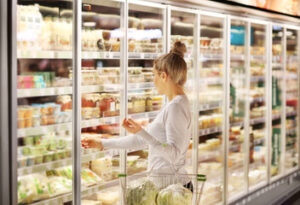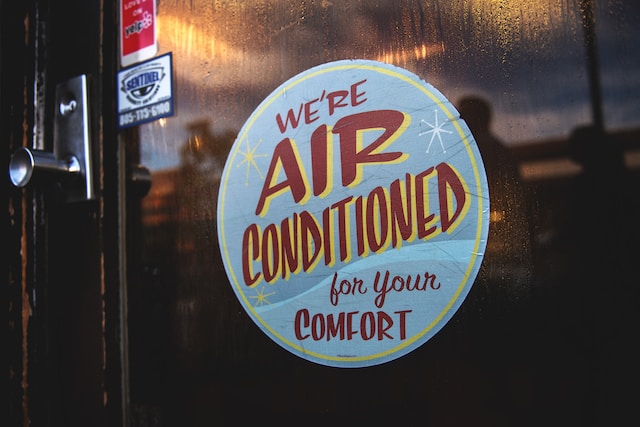The Importance of Refrigeration
All Temp Air Conditioning & Refrigeration allow foods to be stored at a low temperature, which slows down the growth of bacteria and other microbes that spoil food. It also prevents odors from contaminating other foods.

Refrigeration uses a cycle of heat transfer. It takes in cold air and pumps it through tubes that change from liquid to vapor and back again. This process gives off heat, so you feel warm when you put your hand in the fridge.
Refrigeration is removing heat from an object or space to lower its temperature. It is an important technology in many areas, including food processing and preservation, chemical industries, air conditioning, ice production, transportation, and refrigeration. It is also used for medical and surgical purposes. Many of the world’s food supplies depend on refrigeration to keep them fresh.
Refrigerating foods and other products preserves their organoleptic properties and slows the growth of bacteria that can cause diseases. It also extends their shelf life and keeps them safe from contamination and spoilage. The major foods that require refrigeration are mature cheeses, beverages (beer, wine, and soft drinks), meats, fish, fruits, and vegetables.
A refrigerator evaporates a liquid into a gas to produce cool temperatures. The evaporator is connected to a compressor, a condenser, and a metering device through tubing. The tubing helps transfer the heat from the evaporator to the refrigerant, preventing the refrigerant from leaking.
The refrigeration system has four major components: the evaporator, the compressor, the condenser, and the expansion device. The evaporator is the heart of the refrigeration system. It absorbs heat from the items in the refrigerator and is also responsible for cooling the fridge’s interior. The compressor is the part of the refrigeration system that pumps the refrigerant and increases its pressure. The condenser and evaporator can be bare pipes, or they can have finned surfaces that increase their surface area for better heat exchange.
The invention of mechanical refrigeration made it possible for households to preserve their food and drink. It developed new settlement patterns and allowed fresh food to travel longer distances to people’s homes. It also prevented the spread of infectious diseases that had previously been a serious problem in developing nations. Modern refrigerators use rapid vaporization of gases, but there are several alternative methods, such as air cycle refrigeration using compressed air, thermoacoustic cooling with sound waves, thermally driven Stirling cycles, and smart metal alloy systems that expand and contract, much like the human body.
Refrigeration is a process of preserving food by keeping it at very low temperatures. That keeps the microorganisms that spoil food at bay. It is the most widely used method of food preservation today. Other forms of food preservation include evaporating, boiling, smoking, and vacuum packaging. Refrigeration slows the action of bacteria so that it takes much longer for food to spoil while freezing stops bacterial action altogether. These processes preserve the appearance, smell, and taste of the food, although they may alter the texture of some foods.
Before refrigeration, people had few means of preserving their food. They relied on curing with salt and drying or using natural coolness, such as caves and root cellars. That was fine for local consumption, but as populations grew and moved into cities, keeping perishable goods cold during transit and in homes became necessary. Refrigeration made this possible, revolutionizing industry, lifestyles, agriculture, and settlement patterns.
In addition to improving food quality, refrigeration reduces waste and helps save energy. It is also important to reduce climate change since it prevents methane emissions from decomposing food waste. It also allows for better storage of vaccines and other medical supplies.
The ability to keep meat and produce cold from the initial harvest to consumers’ homes has changed how Americans think about their diets. It has helped us develop new food systems and improve our overall health. Refrigeration has also increased the safety of our food supply and contributed to a longer life expectancy in America. While enhanced medical care has played a significant role, the availability of a safer and healthier food supply has been a vital factor in this change.
The development of refrigeration has been a major step in our evolution as human beings. It is the most effective way of preserving and prolonging the shelf life of many different types of food. It is even more useful in countries with limited resources, where it can help make food more accessible to a wider population. It has also opened the door for more food in temperate regions.
Refrigerated transport is a way to deliver food and other perishables safely. These products are often temperature-sensitive and must be delivered quickly and with care. Refrigeration reduces humidity levels, inhibits bacterial growth, and protects the product from environmental stresses. In addition, refrigeration prevents oxidation and preserves the food’s quality. It is a vital component of modern transportation systems and helps guarantee the safety of many foods.
Before mechanical refrigeration was available, ancient peoples used to cool their food with ice transported from the mountains. Wealthy families made use of snow cellars, pits dug into the ground and insulated with wood and straw, in which packed snow and ice could be stored for months. These early examples of refrigeration were limited regarding what was available to consumers because the supply of fruits and vegetables depended on the season and what could be grown locally. Refrigeration changed this, and by the late 19th Century and early 20th Century, most of the world’s food was readily available to consumers at very low prices thanks to refrigeration.
The natural course of thermal energy is to move from higher to lower temperatures, but in refrigeration, this process is reversed. Heat is extracted from the colder object and pumped into the warmer to cause cooling. That is accomplished by using the principles of thermodynamics. A refrigerant is a chemical substance that absorbs and releases heat to control the object’s temperature. The most common refrigeration compounds are ammonia and methyl chloride.
Another refrigeration method is to cool a container by melting ice or sublimating dry ice. A simple refrigerator uses a box, a tray of ice, or a cooler with an ice pack to keep food and drinks chilled. A more sophisticated refrigeration unit is called a thermoelectric cooler, which generates cold by passing an electric current through the junction of two different metals. The Peltier effect is named after Jean Peltier, who discovered in 1834 that electric currents passing through the intersection of two dissimilar metals caused them to cool down.
The first mechanical refrigeration systems were powered by gases such as ammonia and sulfur dioxide (SO2), which were liquefied by absorbing liquids or solids. Carl von Linde developed gas absorption refrigeration in the 1860s and 1870s, primarily for his brewing industry clients, and this technology became widely used by 1900.
Refrigeration is the process of removing heat from an object or space and transferring it to another one. This cooling action prevents the growth of microorganisms that can spoil food or cause disease in humans and animals. It also preserves products that would otherwise expire within a few days. This refrigeration method is used in commercial, industrial, and domestic settings. There are many different mechanical refrigeration systems, but they all work the same way. They consist of a refrigerant, a compressor, a condenser, and an expansion valve or metering device. The basic components of a refrigeration cycle are connected by tubing called “lines,” just like roads connect communities. These lines include the suction line, which connects the evaporator to the compressor; the hot gas or discharge line, which connects the condenser to the compressor; and the liquid line, which connects the condenser and a metering device (thermal expansion valve).
The refrigeration cycle uses refrigerants like water, ammonia, or methyl chloride. The refrigerant is pumped through the refrigeration system, which cools it to below-freezing temperatures. When the refrigerant reaches its lowest temperature, it turns into a gas and is carried to the evaporator coils in the fridge or freezer. The evaporator removes the heat from the refrigerator, and the refrigerant is returned to the compressor, which pumps it back into the evaporator in a continuous cycle.
Before the invention of mechanical refrigeration, ancient peoples, such as the Greeks and Romans, cooled and dumped their food with ice transported from mountain sources. Wealthy families built snow cellars where packed ice could be stored for months. The introduction of refrigeration allowed new patterns of farming to emerge, and it also helped reduce the humidity level on farms, which helped avoid bacterial spoiling.
Modern refrigeration uses gases to achieve low temperatures and significantly contributes to global greenhouse emissions. It consumes vast amounts of energy to maintain below-ambient temperatures and produces harmful air pollutants, affecting the health of local populations. However, the technology is essential to food production, increasing crop yields and lowering transportation costs.
